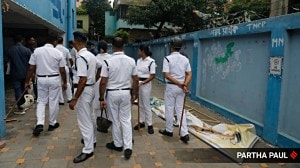Hindi-Chini hai hai
Not since the 1960s has Indian diplomacy been confronted with the kind of challenges it faces today in putting across the message of Pokhara...

Not since the 1960s has Indian diplomacy been confronted with the kind of challenges it faces today in putting across the message of Pokharan-II. On the China front, the language of exchanges between the official Chinese media and sections of the Indian political leadership has deteriorated rapidly. Those exchanges may have something to do with the change of style in New Delhi but obviously do not reflect the real interests of the two countries or their joint commitment to maintaining peace and stability in the region. The real substance of New Delhi’s new approach to international affairs has still to be conveyed in the appropriate fashion. Summoning India’s ambassador in Beijing for consultations in New Delhi leads to the hope that it will be followed by steps towards correcting misperceptions about India’s intentions which have arisen after the five nuclear explosions in the absence of coherent diplomatic follow-up in foreign capitals.
Chinese leaders who responded to the May 11 tests with expressions ofgrave concern became more strident after Atal Behari Vajpayee explained the tests in his letter to President Clinton in the context of China’s weapons status, border differences and Beijing’s assistance to Pakistan’s nuclear programme. Coming on the back of the Defence Minister’s threat perceptions, this was bound to raise the temperature in Beijing. It may well be New Delhi’s preferred style to call a spade a spade but the world is obviously having trouble getting used to it. Beijing’s view is that India has hegemonistic ambitions in South Asia and that building up a non-existent China threat is an excuse for India’s weapons programme. The sooner these avoidable misunderstandings are cleared the better it will be for India to assume the role it seeks as a responsible power. More serious is the reversal of China’s stand on international arms control regimes as seen in its call for the international community to take a common position in bringing an end to India’s nuclear programme. This lays the ground forcloser cooperation between Washington and Beijing on non-proliferation, a distinct departure from the past when, except for some neat footwork during the CTBT debates, China stood resolutely apart.
Two decades of painstaking diplomacy, beginning ironically with Atal Behari Vajpayee’s visit as foreign minister to China in 1979 and continued by every successive Indian government, is getting into an unholy mess. Perhaps now that both sides have got things off their chests, they can sit down together soberly and concentrate on their common political and economic interests. India must help China and the rest of Asia come to terms with its new international stance. Jingoism and inflated rhetoric are the wrong way to do it. A bit of old-fashioned diplomacy would help. Rather than continuing to stress sovereign rights, the new emphasis should be on demonstrating effectively that the steps taken to improve Indian security, and any further steps considered essential, do not jeopardise the security of any othercountry in the region. On its part, China needs to recognise India has a major role to play in Asian security matters.



- 0113 hours ago
- 0214 hours ago
- 034 hours ago
- 0415 hours ago
- 0515 hours ago




























